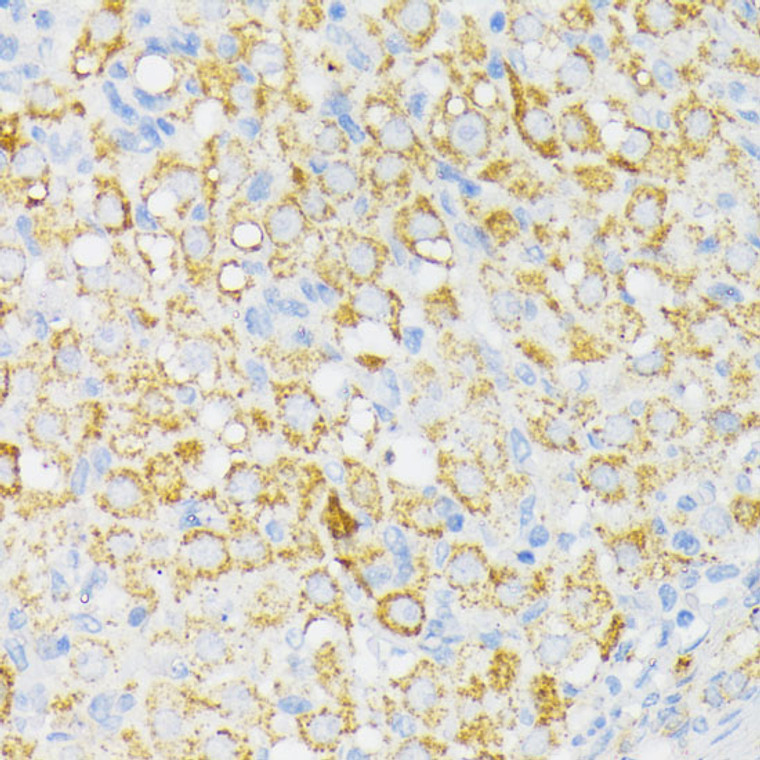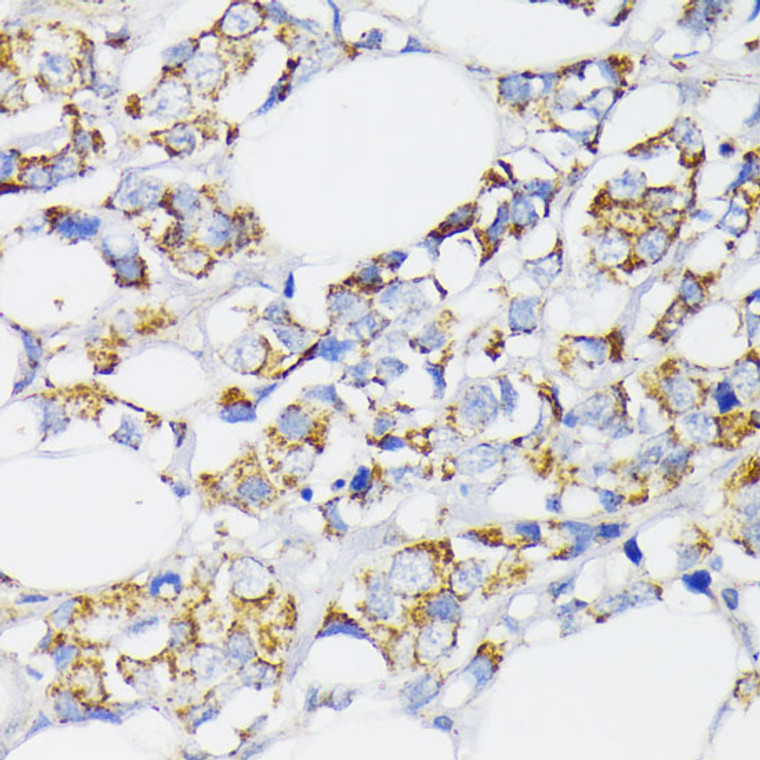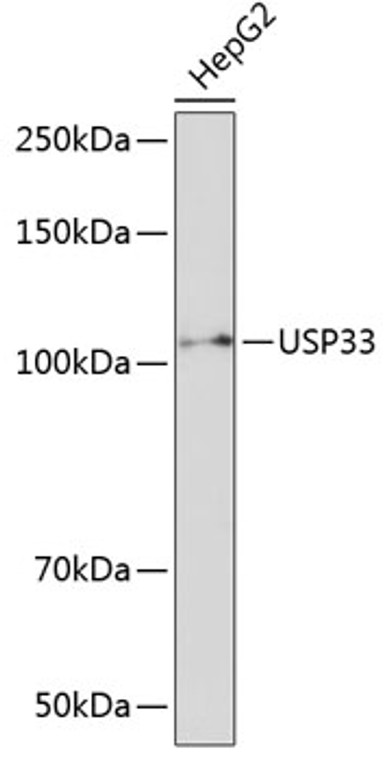| Host: |
Rabbit |
| Applications: |
WB/IHC/IF |
| Reactivity: |
Human/Mouse/Rat |
| Note: |
STRICTLY FOR FURTHER SCIENTIFIC RESEARCH USE ONLY (RUO). MUST NOT TO BE USED IN DIAGNOSTIC OR THERAPEUTIC APPLICATIONS. |
| Short Description: |
Rabbit polyclonal antibody anti-USP33 (290-400) is suitable for use in Western Blot, Immunohistochemistry and Immunofluorescence research applications. |
| Clonality: |
Polyclonal |
| Conjugation: |
Unconjugated |
| Isotype: |
IgG |
| Formulation: |
PBS with 0.01% Thimerosal, 50% Glycerol, pH7.3. |
| Purification: |
Affinity purification |
| Dilution Range: |
WB 1:500-1:2000IHC-P 1:50-1:200IF/ICC 1:50-1:100 |
| Storage Instruction: |
Store at-20°C for up to 1 year from the date of receipt, and avoid repeat freeze-thaw cycles. |
| Gene Symbol: |
USP33 |
| Gene ID: |
23032 |
| Uniprot ID: |
UBP33_HUMAN |
| Immunogen Region: |
290-400 |
| Immunogen: |
Recombinant fusion protein containing a sequence corresponding to amino acids 290-400 of human USP33 (NP_963920.1). |
| Immunogen Sequence: |
QVMEVEEDPQTITTEETMEE DKSQSDVDFQSCESCSNSDR AENENGSRCFSEDNNETTML IQDDENNSEMSKDWQKEKMC NKINKVNSEGEFDKDRDSIS ETVDLNNQETV |
| Tissue Specificity | Widely expressed. |
| Post Translational Modifications | Ubiquitinated via a VHL-dependent pathway for proteasomal degradation. |
| Function | Deubiquitinating enzyme involved in various processes such as centrosome duplication, cellular migration and beta-2 adrenergic receptor/ADRB2 recycling. Involved in regulation of centrosome duplication by mediating deubiquitination of CCP110 in S and G2/M phase, leading to stabilize CCP110 during the period which centrioles duplicate and elongate. Involved in cell migration via its interaction with intracellular domain of ROBO1, leading to regulate the Slit signaling. Plays a role in commissural axon guidance cross the ventral midline of the neural tube in a Slit-dependent manner, possibly by mediating the deubiquitination of ROBO1. Acts as a regulator of G-protein coupled receptor (GPCR) signaling by mediating the deubiquitination of beta-arrestins (ARRB1 and ARRB2) and beta-2 adrenergic receptor (ADRB2). Plays a central role in ADRB2 recycling and resensitization after prolonged agonist stimulation by constitutively binding ADRB2, mediating deubiquitination of ADRB2 and inhibiting lysosomal trafficking of ADRB2. Upon dissociation, it is probably transferred to the translocated beta-arrestins, leading to beta-arrestins deubiquitination and disengagement from ADRB2. This suggests the existence of a dynamic exchange between the ADRB2 and beta-arrestins. Deubiquitinates DIO2, thereby regulating thyroid hormone regulation. Mediates deubiquitination of both 'Lys-48'- and 'Lys-63'-linked polyubiquitin chains. |
| Protein Name | Ubiquitin Carboxyl-Terminal Hydrolase 33Deubiquitinating Enzyme 33Ubiquitin Thioesterase 33Ubiquitin-Specific-Processing Protease 33Vhl-Interacting Deubiquitinating Enzyme 1Hvdu1 |
| Database Links | Reactome: R-HSA-5689880Reactome: R-HSA-9010553 |
| Cellular Localisation | CytoplasmPerinuclear RegionCytoskeletonMicrotubule Organizing CenterCentrosomeAssociates With Centrosomes Predominantly In S And G2 Phases But Less In G1 PhaseIsoform 3: Golgi Apparatus |
| Alternative Antibody Names | Anti-Ubiquitin Carboxyl-Terminal Hydrolase 33 antibodyAnti-Deubiquitinating Enzyme 33 antibodyAnti-Ubiquitin Thioesterase 33 antibodyAnti-Ubiquitin-Specific-Processing Protease 33 antibodyAnti-Vhl-Interacting Deubiquitinating Enzyme 1 antibodyAnti-Hvdu1 antibodyAnti-USP33 antibodyAnti-KIAA1097 antibodyAnti-VDU1 antibody |
Information sourced from Uniprot.org
12 months for antibodies. 6 months for ELISA Kits. Please see website T&Cs for further guidance











